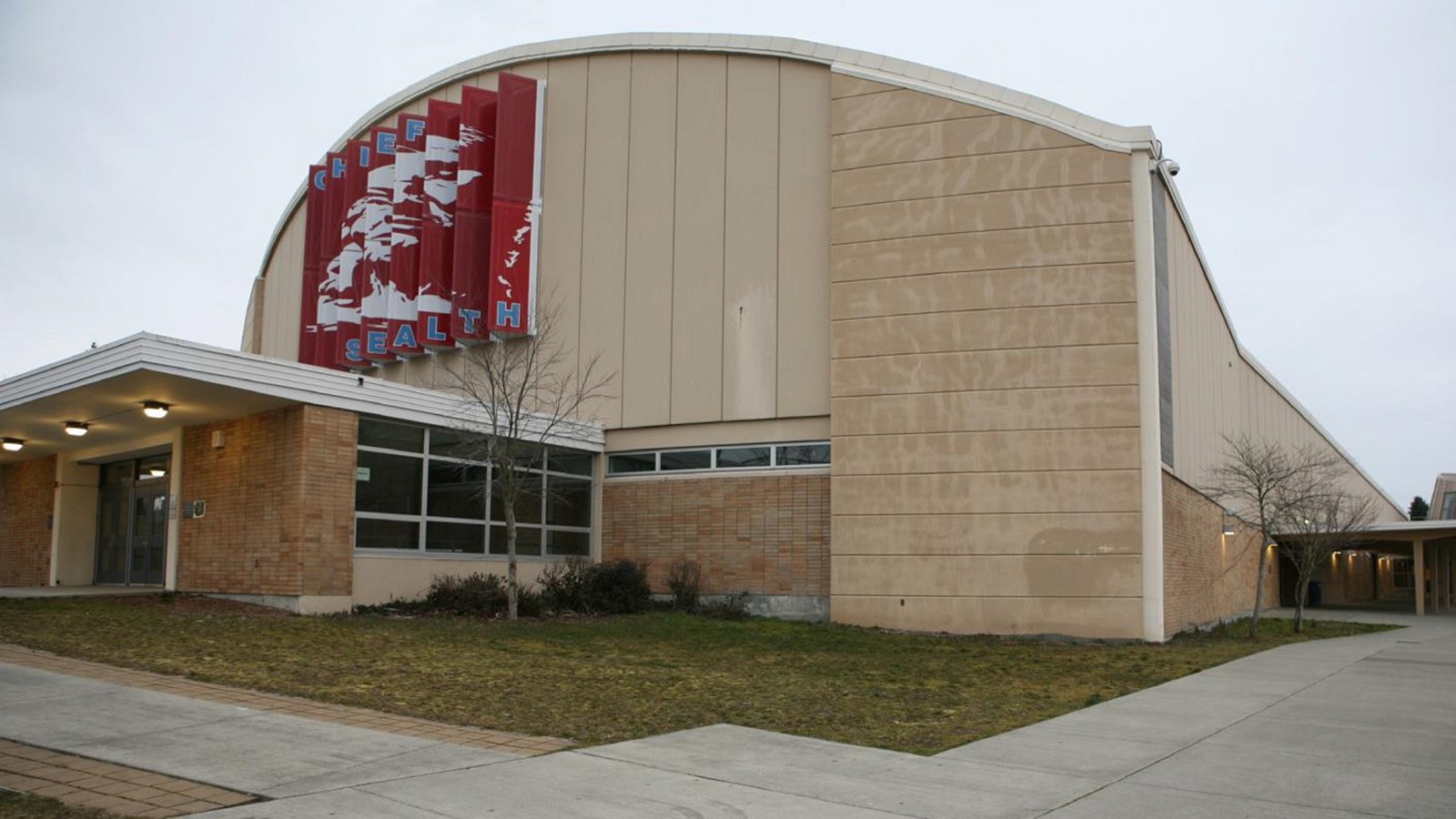Last updated: September 14, 2023
Place
Chief Sealth High School

Photograph by Susan Johnson, courtesy of Washington State Historic Preservation Office
Quick Facts
Location:
2600 SW Thistle Street, Seattle, Washington
Significance:
Education (School), Ethnic Heritage (Hispanic)
Designation:
Listed in the National Register – Reference number 100008187
MANAGED BY:
The Chief Sealth High School in Seattle, Washington was listed in the National Register of Historic Places in 2022. The school is significant for the establishment of the Proyecto Saber Program, which was designed in response to the Chicano movement to support Latino/Chicano students in Seattle.
Chief Sealth High School opened in 1957. The school's construction was in response to an overwhelming influx of students after World War II, particularly in the south Seattle area. Students from a nearby junior high school voted on the name "Chief Sealth" in honor of Chief Noah Sealth, the most prominent Indigenous leader in the region at the time of European settlement.
South Seattle was an industrial center, and working-class families of various backgrounds, ethnicities, and immigration histories lived in the area. One of these groups included a burgeoning Latino community, who had started migrating to Seattle during World War II to work in the wartime industries. Throughout the next few decades, migrants with origins in a number of South and Central American countries continued to arrive in the Seattle area.
Simultaneously, a national movement for Chicano civil and labor rights began to take hold on the West Coast. In addition to preserving farmworker rights and promoting cultural visibility, the movement also emphasized reducing disparities and discrimination in education. In the 1970s, Washington state began to address patterns of racism and discriminatory practices in public schools, which contributed to a nearly 75% drop-out rate for Chicano students at some Seattle high schools.
To address the needs of Latino students, Seattle Public Schools established the Proyecto Saber Program in 1975, which was based out of Chief Sealth High School. The program, which was operated by bilingual teachers who visited schools throughout south Seattle, originally served as a way to provide tutoring and counseling for Latino students. It later evolved into a dynamic force for empowerment and cultural enrichment for students and their families, offering workshops on racism, leadership, and the Chicano movement.
Chief Sealth High School continues to be home to the Proyecto Saber Program, even as the program has shrunk and teachers no longer travel to other schools. The nomination for Chief Sealth High School was developed as part of a NPS Under-Represented Communities Heritage Grant.
Chief Sealth High School opened in 1957. The school's construction was in response to an overwhelming influx of students after World War II, particularly in the south Seattle area. Students from a nearby junior high school voted on the name "Chief Sealth" in honor of Chief Noah Sealth, the most prominent Indigenous leader in the region at the time of European settlement.
South Seattle was an industrial center, and working-class families of various backgrounds, ethnicities, and immigration histories lived in the area. One of these groups included a burgeoning Latino community, who had started migrating to Seattle during World War II to work in the wartime industries. Throughout the next few decades, migrants with origins in a number of South and Central American countries continued to arrive in the Seattle area.
Simultaneously, a national movement for Chicano civil and labor rights began to take hold on the West Coast. In addition to preserving farmworker rights and promoting cultural visibility, the movement also emphasized reducing disparities and discrimination in education. In the 1970s, Washington state began to address patterns of racism and discriminatory practices in public schools, which contributed to a nearly 75% drop-out rate for Chicano students at some Seattle high schools.
To address the needs of Latino students, Seattle Public Schools established the Proyecto Saber Program in 1975, which was based out of Chief Sealth High School. The program, which was operated by bilingual teachers who visited schools throughout south Seattle, originally served as a way to provide tutoring and counseling for Latino students. It later evolved into a dynamic force for empowerment and cultural enrichment for students and their families, offering workshops on racism, leadership, and the Chicano movement.
Chief Sealth High School continues to be home to the Proyecto Saber Program, even as the program has shrunk and teachers no longer travel to other schools. The nomination for Chief Sealth High School was developed as part of a NPS Under-Represented Communities Heritage Grant.
